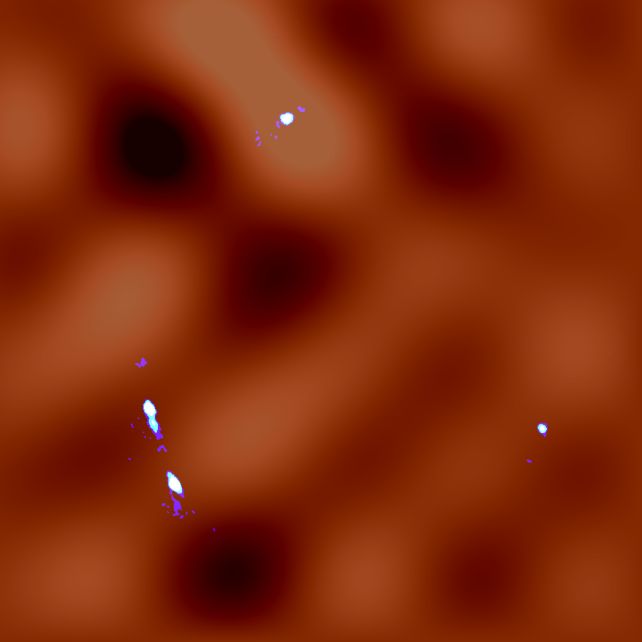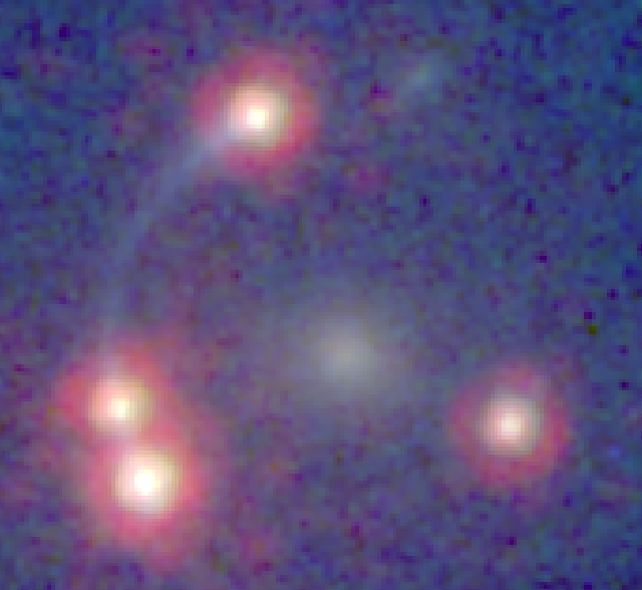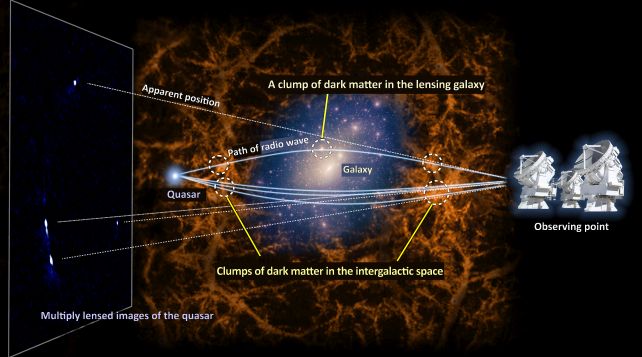Unprecedented Mapping Reveals Enigmatic Dark Matter Spread Throughout the Cosmos
The curvature of space-time around a colossal mass has yielded the most detailed measurement of the cosmic distribution of dark matter yet.
Aided by a gravitational lens, a team led by cosmologist Kaiki Taro Inoue of Kindai University in Japan has mapped the mysterious form of matter on the smallest scale we’ve ever seen, with a resolution of just 30,000 light-years.
That might seem large, but when you consider that the Milky Way is about 100,000 light-years across, it’s more impressive. The researchers have been able to map something we can’t even see down to a scale less than a third of the size of our galaxy, across more than 7.5 billion light-years. That’s amazing.

The analysis relied on a chance alignment of cosmic objects known as a gravitational lens. Space-time curves around massive bodies in a way that’s reminiscent of how a trampoline dimples beneath your body when you sit on it. If you roll marbles across the trampoline mat, they won’t travel in a straight line, but a curved one as they follow the rounded surface.
A similar thing happens to light streaming through space when it encounters the curved space-time around a massive object, such as a galaxy or galaxy cluster. So if you have, say, a distant galaxy behind one of these objects, the light from the more distant galaxy will become distorted and magnified as it travels through the curved space-time.

One reason this is great is because scientists can study those distant galaxies in much greater detail than they would be able to without the lens. But the way the light is distorted and smeared can reveal the distribution of gravity in the foreground lens, too.
This, as it turns out, is an excellent way to find where dark matter is hiding. We don’t know what dark matter is; it emits no light, so we can’t detect it directly. What we do know is that there is some invisible mass out there in the Universe making excess gravity. We can detect the effects of that gravity, and thus track down where the mass is lurking.
That still won’t tell us what dark matter is, but working out where it is can help us get a grasp on how it works. In the case of a gravitational lens, once you subtract all the normal matter (that is, galaxies) from the distribution of mass decoded from the distorted light of the background object, what you have left is dark matter.

This is what Inoue and his colleagues have done with a gravitationally lensed galaxy called MG J0414+0534, which is so far away its light has taken around 11.3 billion years to reach us. Sitting a little closer, the foreground lens galaxy has distorted and divided that light into four images.
The positions of these split images are not entirely accounted for by the lensing effect of the visible parts in the foreground galaxy. So using the powerful Atacama Large Millimeter/Submillimeter Array, and a new analysis technique, the researchers subtracted the effects of the visible portions of the lens galaxy to on the distorted light from MG J0414+0534 for a more granular map of the len’s dark matter.
This resulting map supports the theory that there are many clumps of dark matter within galaxies as well as in the spaces between, as predicted by the theory of cold dark matter. It confirms for the first time, that this theory remains consistent at this smaller-than-galaxies scale.
This, the researchers say, offers a powerful new tool to aid in the quest to understand dark matter. Being unable to resolve its distribution on scales smaller than galaxies has hindered efforts to constrain its properties. Being able to do so will help scientists narrow down the options for the identity of the mysterious, ubiquitous mass.
The research has been published in The Astrophysical Journal.
Source: ScienceAlert
Do not forget to share your opinion with us to provide you with the best posts !




0 Comments